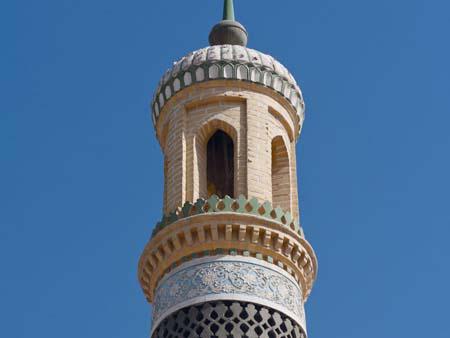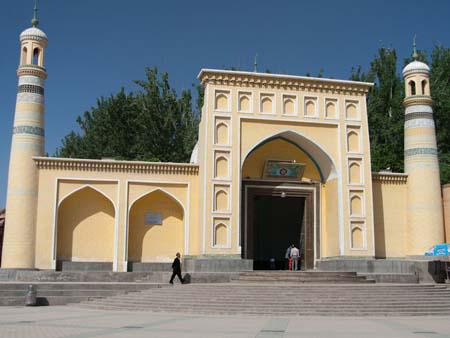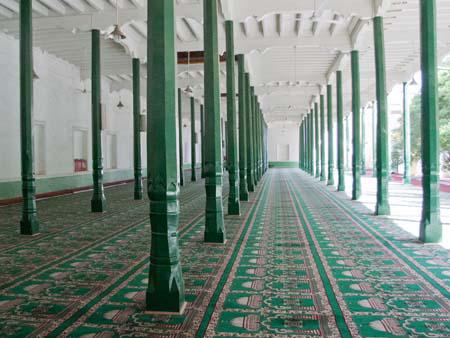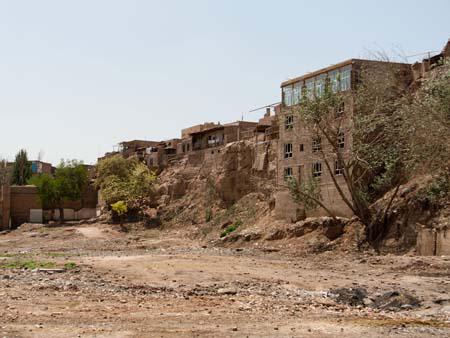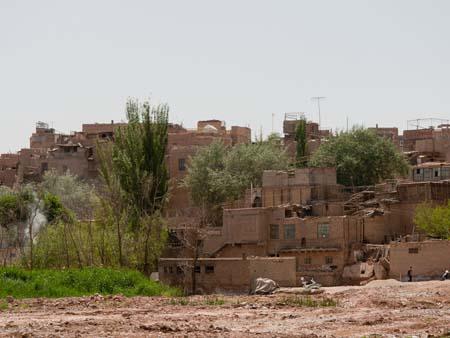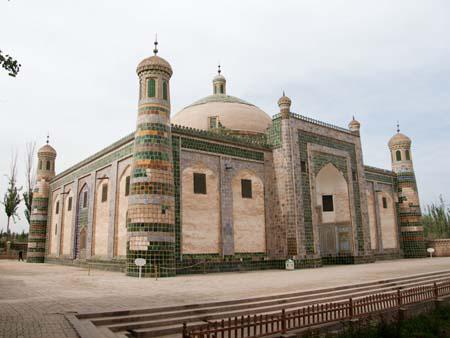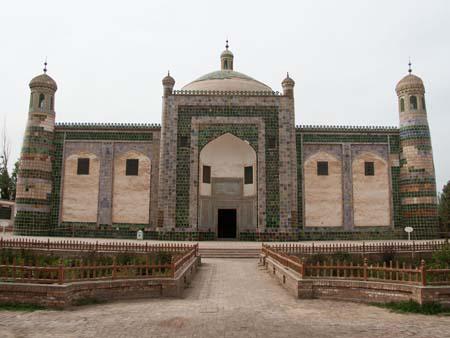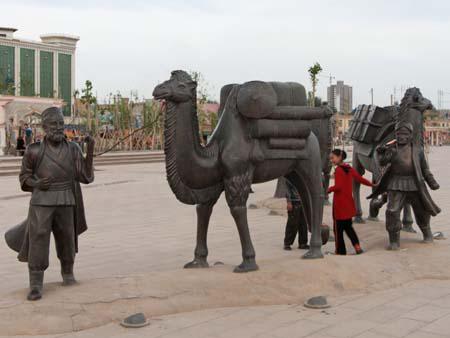Kashgar (or Kashi as we learnt when booking the airline tickets) is an important Silk Road city as it was the first major hub after travellers from China heading west had passed the hazardous Taklamakan Desert. Kashgar contains a mix of cultures, predominantly the Islamic Central Asian Uyghur people and more recently with new development in the Western China region, Han Chinese. Kashgar boasts one of the largest and liveliest livestock markets in the world.
We visited Id Kah Mosque, the largest mosque in China, a yellow exterior facade, the design was distinctly different to the mosques we had only recently seen in Iran and Central Asia. From the mosque we visited the Afaq Khoja Mausoleum, the holiest Muslim site in Xinjiang. The mausoleum featured colourful mosaics on the minarets and dome.
One of the interesting things was the time zone, in Kyrgyzstan the sun was setting around 8pm local time. Now even though Kashgar is a few hundred kilometres from Kyrgyzstan, all of China uses Beijing time, which is a further two hours ahead. This meant that the sun would be setting around 10pm, not something that we were used to.
The highlight though was the Uighur food.
thydzikgooglemap(http://sonyaandtravis.com/maps/kashgar-china.xml)




































































































